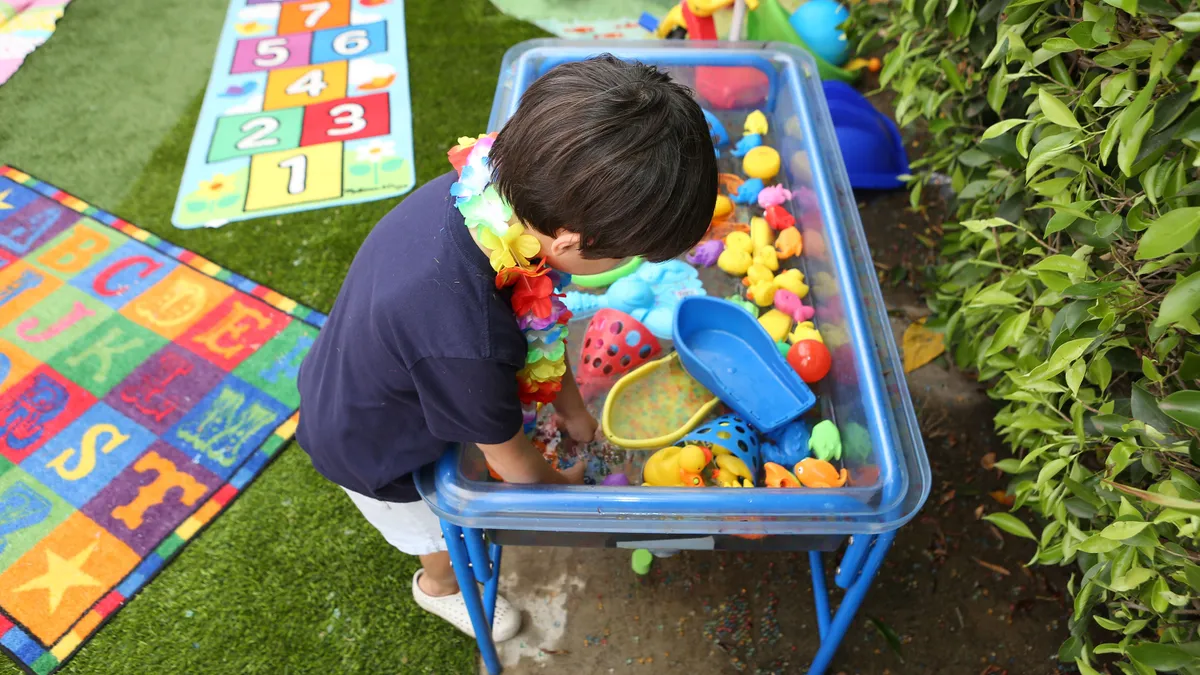Dive Brief:
-
Kindergarten entry assessments can inform decisions in curriculum and instruction that best fit individual students’ learning needs, but if structured poorly, the assessments can cause frustrations for early learners and their teachers and can lead to inappropriate teaching strategies, a report from the Learning Policy Institute said.
-
The 82-page report highlights best-practice approaches for kindergarten entry assessments from several states and school districts. For example, the Georgia Readiness Check assessment is integrated with other statewide assessments and allows teachers flexibility to obtain detailed student learning information while minimizing the time it takes to administer the testing.
-
Early education administrators who are feeling pressure to accelerate student learning due to pandemic-era school closures should consider using high-quality kindergarten entry assessments so they can begin the school year knowing what learning deficiencies need to be addressed.
Dive Insight:
As more schools open for in-person learning during the 2021-22 school year, some are predicting a "kindergarten bubble" — an influx of 4-to-6-year-olds who may be entering formal education for the first time and whose range of skills will vary widely depending on their educational experiences last year.
Kindergarten entry assessments, also known as KEAs, are typically administered in the early weeks of kindergarten and can consist of direct assessments, which require a child to respond to a direct prompt from the assessor, and observation-based assessments, in which teachers document a child’s interactions and behaviors across a range of activities like playtime or whole-class learning.
Early educators also use screeners, which are typically more narrow in scope and do not give enough information to inform instruction.
Some KEAs are part of assessment systems that start in preschool and continue throughout the kindergarten year or into the early elementary grades. The Elgin Area School District U-46 in Illinois, for example, developed its preschool assessment based on the kindergarten measurement to help better understand what children know and can do as they transition between the two levels.
There are 38 states that have a KEA, which is five times more than 10 years ago. The growth is attributed to a federal policy that required states receiving Race to the Top Early Learning Challenge grant funds to implement statewide KEAs, according to LPI.
States have different intended purposes for the KEAs, according to research from the National Institute for Early Education Research. Those include:
- As a tool for teachers to better understand the skills each new student brings to school.
- To engage families in the education system by informing them of their child’s progress.
- Providing the state with data about school readiness trends.
KEAs should not, however, be used for evaluating teachers or individual programs, delaying kindergarten entry or diagnosing a learning disability, the LPI report said.
“Assessments that are narrowly focused on discrete skills and exclude essential developmental domains can, if they are used in a high-stakes fashion, limit early childhood curriculum and foster inappropriate teaching strategies,” the report said.
LPI recommends several policies to help ensure KEAs support children’s learning and development:
-
Choose appropriate assessments. Assessments should measure learning in ways that are authentic, as well as culturally and linguistically appropriate. This includes observations of children learning or playing. Assessments should also allow for accommodations for students who are dual-language learners and who have disabilities.
-
Use assessments that inform instruction, support family engagement. School systems should give ongoing professional development on the use of assessments and how to analyze the results. Specifically, conducting observational assessments requires significant practice for ensuring the validity of the results.
-
Use data appropriately and beware of misuse. To strengthen early learning systems, educators across grade levels should share assessment data with each other to help strengthen the early learning system. School systems should avoid using KEAs as a measurement for the effectiveness of programming since many factors influence school readiness, and such approaches could unfairly penalize programs serving children with disadvantages.
-
Include multiple stakeholders in selecting the KEA. Having multiple stakeholders — such as families, teachers, early education providers, community advocates, philanthropies and state and local decision-makers — participate in the selection and implementation of KEAs can help build buy-in. For example, Washington state and teacher unions worked together to change instructional minute regulations to allow more time for meeting with families.














